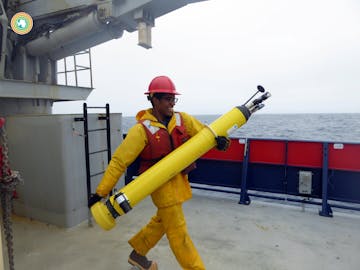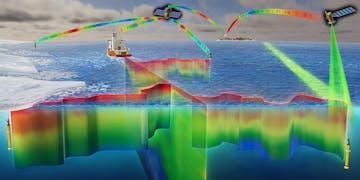
Earle Wilson, a former postdoctoral student at the University of Washington, prepares to deploy a SOCCOM float. Researchers have been deploying biogeochemical floats in the Southern Ocean as part of the SOCCOM program since 2014. The new GO-BGC grant will provide money to deploy similar floats in all the world’s ocean basins. Image courtesy of SOCCOM (NSF Award PLR-1425989).
“GO-GBC will transform our ability to observe and understand the chemical and biological cycles that are the foundation of marine food webs in the vast majority of ocean areas that are rarely sampled,” said MBARI Chemist Ken Johnson, one of the principal investigators on the project. “These observations will establish the baseline rates of photosynthetic production, respiration, and nutrient supply in present ocean ecosystems, and they will alert us to possible changes in the future.”

